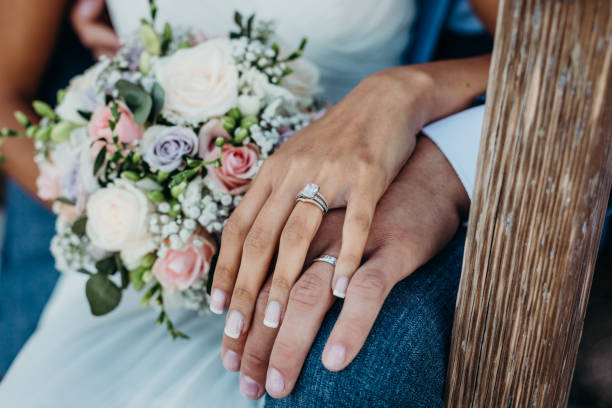
A round old European-cut diamond has 58 large facets and a small circle in the center (the open culet). Between 1890 and 1930, the majority of these stones were cut by hand.
These stones were extracted from the rough and hand measured, cleaved, and cut. Because candlelight was the primary source of light for the majority of this time, diamonds were cut to maximize their sparkle for this type of lighting.
Old European-cut diamonds were popular during the Victorian, Edwardian, and Art Deco periods, and they predated today's popular round brilliants. When shopping for this style of ring, you'll often see art deco and vintage influence, which makes for a stunning vintage engagement ring look.
If finding a low-cost diamond is on your ring shopping list, you're in luck. Old European-cut diamonds are typically less expensive than modern round brilliant diamonds.
Another advantage of elderly Europeans is that they appear whiter than their certified color grade. Diamonds are graded by color by turning them upside down and looking at them from the side. Because old European-cut diamonds were created in a time when lighting was limited (candlelight), they were cut to emphasize color over brilliance.
Unfortunately, this style is more difficult to find online. Because of the artisanal techniques used to cut these diamonds, each stone may appear slightly different. I don't recommend buying an old European-cut diamond solely based on the certificate. You must see how it appears in person.
Because they have a shallower proportion, your diamond will appear larger for its carat weight. When examining a diamond's proportions, make certain that they are not too extreme to the point of losing sparkle.
When working with an antique diamond, my clients prefer a simpler setting because they don't want any design elements to distract from the uniqueness of their stone. That's not to say a more ornate setting wouldn't look good with this cut. Indeed, because they were popular during the art deco period, you may come across more unusual settings with old Europeans. Consider a solitaire setting for a more straightforward appearance. Choose a filigree or vintage setting for a more daring look.
Yes, machine-cutting was not available when old European diamonds were cut, so each diamond was handcrafted. That is why you will never find two identical old European-cut diamonds.
Because old European-cut diamonds are considered antique, it may be more difficult to find a variety of options in this style. You'll want to work with an experienced jeweler who can assist you in finding the perfect old European-cut ring for you.
Avoid using harsh cleaning chemicals or detergents when cleaning your old European-cut diamond. Instead, make your cleaning solution out of lukewarm water and gentle dish soap. When not in use, store in a cloth-lined box.
Depending on the grade of the girdle, old European cuts have a tendency to chip over time. This is the diamond's edge between the crown (the top of the diamond) and the pavilion (bottom of the diamond). This is the most likely area to be chipped. The more brittle the stone, the thinner the grade.
Sell your diamonds with ease with Diamond Registry’s comprehensive approach and vast global industry connections to help you find the best buyer for your diamond fast. Visit www.diamondregistry.com/sell-your-ring to take your first step to fast, easy and reliable way of selling your diamond.
Want to check and calculate diamond per carat instantly? Go to DR’s diamond price calculator to know how. Reliable and trusted carat calculator in the diamond industry since!

